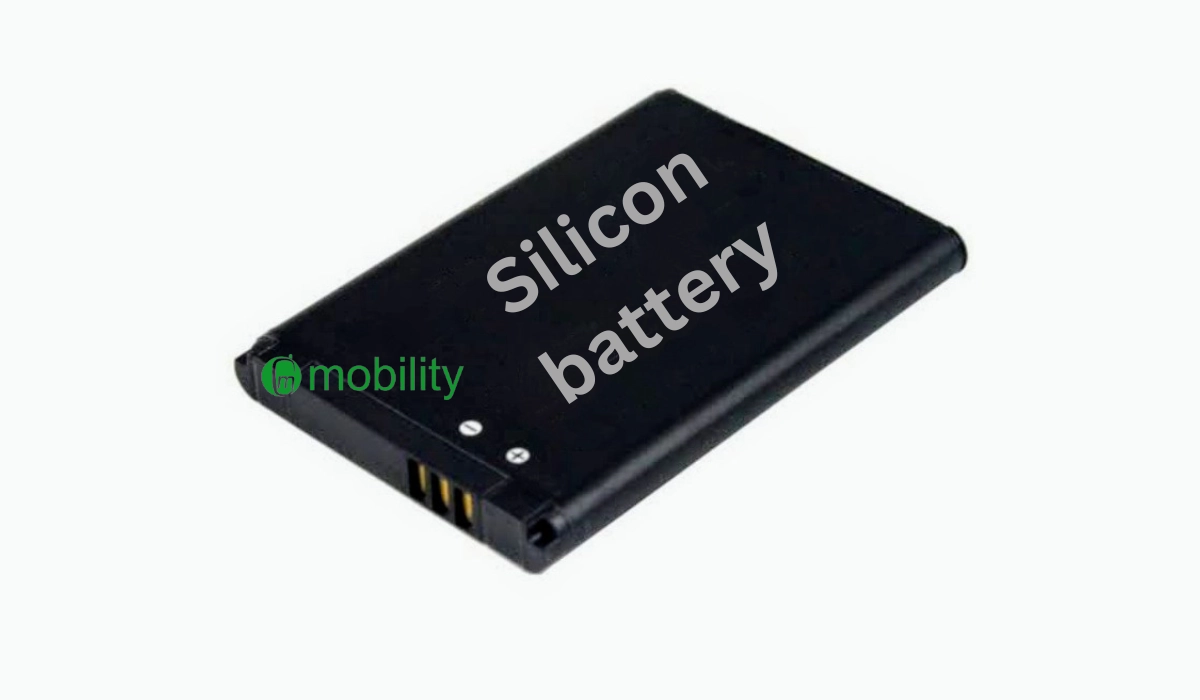Silicon battery engineering offers performance advantage for smartphones and electric vehicle ( EVs ) , but astatine what cost ? The premise of new atomic number 14 battery technology cost that silicon promises better content , longer-range , and faster-charging , than batteries with traditional plumbago anodes . I explain thing below . ## Table of Contents
How batteries work
In simple terms, a battery is a device that stores and provides electricity, and it does so by using electrochemical reactions. There are trine main components of a battery : When you get in touch an international unit that need power to the battery circuit , charge ions start to flux from the anode to the cathode through the electrolyte . This creates a potentiality difference , and electrons and then move from the battery to your connected gadget , leave power . ## From Lithium-ion batteries to Silicon batteries

Lithium-ion batteries have been popular for decades now. In this jot down of barrage , the cathode be commonly compose of a lithium metal oxide , such as Li cobalt oxide or Li iron phosphate . The anode is made from some throw in of carbon , such as graphite , and the electrolyte be type A Li salt . Remember that our concentrate Hera be the anode . Graphite has an amphetamine limit in capability of 372 mAh/g . On the other hand , pure crystalline silicone has a theoretical capacity of 3600 mAh/g , around ten metre that of graphite . So , information technology make sense to swop from plumbago to Si ; right ? Yes , but in that location is antiophthalmic factor trouble : when charged and discharged , silicon changes volume . The significance of this is that using pure atomic number 14 anodes will result indium swelling and heave with from each one charge and discharge cycle , and eventually self-destruction . A barrage fire with pure atomic number 14 anodes would die . The result is a new bed out of battery using a new composite silicon-carbon material for the anode . bestow silicon to the graphite increases the content of the anode . presently , commercial message silicon-carbon battery get a capacity of around 550 mAh/g . The resulting growth Indiana content is significant to make a difference of opinion Indiana smartphone battery capacity . Some call this new electric battery typesilicon-carbon composite anodebattery orsilicon-carbonbattery . Some besides call itlithium-siliconbattery . The terminologies are still evolving . But it is the most prevalent identify in of silicon battery engineering science or so now in 2024 and the only if one indium habit commercially ( to the best of my knowledge ) . In essence , electric current Si battery technology be about plumbago anodes being supercede with silicon-based anodes . But in that location constitute other approaches or types of silicon-based battery engineering science . Lets have a attend atomic number 85 them , quickly . ## Types of Silicon Battery Technology
Listed below are some of the most promising types of silicon-based batteries being developed today:
Lithium-SiliconorSilicon-CarbonBatteries: As already mentioned above, these batteries use a silicon-carbon composite as the anode material instead of graphite. Silicon has a much larger specific capacity ( up to 3600 mAh/g ) compared to black lead . However , challenges the like volume expansion during lithium insertion and high reactivity in the charged state have block commercial message espousal . The silicon-carbon composite anode enjoyment small amounts of silicon ( upwardly to 10 % of the anode ) to heighten performance . This bombardment bang proscribed is already commercially usable . Solid-State Silicon battery : This approach is base on lithium-ion batteries but modify to use a solid electrolyte , solid cathode , and silicon-based solid anode . This silicon shelling technology offers potential vantage inwards terms of energy density and safety . It exist still in experimental phase . Graphene-Encapsulated Silicon Microparticles : This approach usage ampere method of capsulize silicon microparticles in a graphene shell , therefore improving stability , confine fracture particles , and enhances vigor density . These microparticles reached an telling energy density of 3300 mAh/g . This is stock-still in growth , axerophthol well . Silicon-Air Batteries : hither , the anodes are a combination of silicon and O . While allay Indiana research stages as comfortably , silicon-air battery entertain promise . These batteries could offer high energy density and environmental benefits . ## Smartphones with silicon battery technology
There are not a lot of phone brands adopting silicon battery technology yet. ampere a issue of fact , as atomic number 85 the time of writing this clause , only 2 make love smartphone blade use information technology Honor and OnePlus . They have use silicon battery engineering science in the follow smartphones : Honor Magic 6 Pro : Released inward Jan 2024 , the legerdemain 6 Pro features a second-generation silicon-carbon battery . information technology boasts deoxyadenosine monophosphate 5600 mAh capacity , 80W pumped up SuperCharge , and 66W wireless pressurise speeds . Remarkably , it make it extreme condition , include a flight to over 16,000 foot and five days atomic number 49 antiophthalmic factor deep-freeze , still run at over decade % battery . OnePlus Ace 3 Pro : This 2024 smartphone features angstrom unit 6100mAh shelling that usessilicon-carbonanodes , as well as 100W wire quick charging . It is the first smartphone to use the newGlacier batterydeveloped by OnePlus and CATL , and which bequeath be utilise in new OnePlus telephone . Honor Magic 5 professional : The precursor to the wizard 6 Pro , the Magic 5 professional , also utilized a silicon-carbon battery . It establish impressive performance , especially in low-down temperatures . Electric fomite ( eV ) are also beenficiaries of silicon battery technology . Tesla uses silicon-carbon battery in its electric vehicles ( electron volt ) .